the Monster of Florence
The Monster of Florence, is the literal translation of the ‘Mostro di Firenze’, the name given to the person responsible for the death of at least 14 people near Florence between 1974 and 1985.
The case is considered one of criminology's most baffling mysteries with an investigation spanning over 40 years.
Despite the fact that the Italian authorities sought out the help of expert investigators, criminologists, psychologists, and sociologists from all over the world, the case has remained a puzzle with no solution.
Although there have been trials in the Monster of Florence case, and 2 men sent to prison, the Mostro di Firenze is still considered a cold case.
Note: this page recounts crimes which could offend the sensibilities of some readers.
An Overview of the Case
The modus operandi of the monster was always the same. His victims were all couples who were alone – usually in a parked car - in isolated country areas in the night.
The attacker would wait for the couple to start getting intimate, this way their defences would be down and they would be less likely to notice what was going on outside the car.
The monster would then come out of the dark and ambush the man and woman, shooting both with a gun and then finishing off his work with a knife.
The crime would end with the attacker carrying out his ‘ritual’ of disfiguring the female victim’s body with a knife.
The crimes took place on moonless nights and on an evening when most people didn’t have to work the next day, either because it was a weekend or a holiday.
The attacker always switched area from one crime to the next, ambushing couples in a completely different part of the Florence suburbs.
The Gun of the Mostro
The biggest piece of the puzzle in the Monster of Florence case is the gun used, which was always the same - a Beretta 22 caliber pistol loaded with Winchester series H bullets.
As we shall see, understanding the enigma of the gun, would mean finding the solution to the crimes.
Yet nobody has been able to do this.
It was very easy to identify the fact that the same gun had been used for all the crimes because the firing pin left a particular mark on the shell casing of the bullets.
This defective firing pin, and the fact that the Monster of Florence always used the same bullets produced before 1968 and with an H embossed on the back, allowed the police to determine with absolute certainty that the same person was responsible for all the crimes.
The Monster of Florence has intrigued investigators, psychologists, and criminologists for decades because it is the only crime case of its type in the history of criminology.
Why the Monster of Florence is a Unique Case
“This case in the only one of its kind in the world, so who can we turn to for help?” , a quote by Mauro Maurri, the medical examiner who carried out the autopsy on all of the victims.
Maurri’s sentiments are confirmed by Italian criminologist Francesco de Fazio, who also drew up a character profile of the mysterious killer.
De Fazio reiterates that crimes such as those perpetrated by the Monster of Florence are unlike any found in the whole of the literature of criminology: “In all the case studies on criminology, no case can be likened to the Monster of Florence.”’
What makes this 22 caliber killer unique?
- The Modus Operandi adopted by the killer. The Monster of Florence commits his crimes solely in remote country areas in the darkest of nights, hiding and waiting patiently for the right moment for a ‘blitz’ ambush on young couples
- The Florence killer has very long and uncommon pauses between attacks, usually a year and in one instance up to 7 years.
- The Mostro never carries out any sexual activity of any kind with his victims, either pre or post mortem, indeed he prefers not to interact in any way whatsoever with the couple, ambushing and rendering them lifeless in a matter of seconds
- The Monster of Florence does not act out on instinct or impulse, but plans out his crimes carefully and rationally choosing nights with little moon light, waiting for an optimum situation in which he finds a lone couple in an area where he is certain there are no hidden voyeurs
The mystery of the Monster of Florence is all the more intriguing because of where these crimes took place, the suburbs around Florence.
The Florentine countryside is famous the world over for the gracefulness of its hills and the picture perfect harmony of its cypress trees and olive groves.
Tourists come in thousands every year to admire the bright yellows and reds in fields of sunflowers and poppies, the same fields that young couples chose for spending time alone together looking for intimacy and romance.
It is this contrast between what Paolo Cochi - director of a documentary on the case - calls a mix of ‘love and death’ that makes this case not only unique but also uniquely Italian.
An 'Open and Shut' Case?
Before we talk about the mystery of the Monster of Florence, and the enigma of the gun, first we must talk about a ‘solved’ crime, a crime of possession, passion and jealousy that took place long before Florence met its famed mostro.
On a Wednesday night at about midnight on August 21 1968, two lovers are spending time alone together in a car parked in a woodsy area in Lastra a Signa a small town on the outskirts of Florence.
The woman is Barbara Locci, 31, and the man is Antonio Lo Bianco, 29. They are both married, but to other people.
In the back seat of the car the woman’s 6 year old son Natalino is sleeping.
A person (or several people?) comes out of the dark bushes and sneaks up to the car and before the two lovers can realize the danger they are in, they are both shot and killed on the spot.
At two in the morning six year old Natalino rings the door bell at a house about a mile away from the crime scene.
The owner – certainly surprised at having an unexpected guest at this hour – looks out of the window and sees a young shoeless boy standing alone outside his door.
‘’Let me in, I’m tired and my father is home sick, then you have to take me back home because my mommy and uncle (Ed. in Italy it’s common for children to refer to parents’ friends as ‘aunt’ and ‘uncle’) are both dead in the car.’’
The boy will later recount how, after the shootings, a man took him on his shoulders and carried him to this house about a mile away, singing a popular song to him along the way.
The man rang the doorbell (Natalino was too short to reach) and then left him alone at the front door.
The crime is considered an ‘open and shut case’ and is solved quite quickly.
The woman was the wife of Stefano Mele, a much older man considered mentally slow. She was also the lover of several other men, including 3 brothers, the Vinci’s, who were part of a group of Sardinians who emigrated to Tuscany and were living and working in and around Florence.
Giovanni, Salvatore and Francesco Vinci, manual laborers and petty criminals, had all been lovers of Barbara Locci at some point, with Salvatore even having moved into Locci and Mele’s home for an extended period.
The husband, Stefano Mele, was convicted of the crime.
The evidence against him was:
- A paraffin glove test that proved positive showing that he had recently fired a gun
- The man also confessed, but then retracted his confession, then confessed again, also while accusing the Vinci brothers of also being involved, but in the end admitted to committing the murders by himself
- As the police saw it, he had a motive, his wife was betraying him with several other men and he probably had just got fed up
- He was supposedly home ‘sick in bed’ when the crime was committed, which didn’t make for a very convincing alibi.
Natalino too told a few different versions of the facts:
- First he said his father was there when the shootings occurred, as well as some other men including one named ‘Salvatore’ (likely a referrence to the Vinci brother). Later, he said that he hadn’t seen his father there at all, in fact he’d seen nobody that he recognized
- Initially he said that he got to the house a mile away by being carried on a man’s shoulders while this anonymous person sang a popular song to him to put him at ease. Later he changed his story saying that he had walked to the house on his own (although he had no shoes and it was pitch black in the woods)
In spite of accusing on-and-off the Vinci brothers and in spite of his son Natalino’s changing stories, Mele – the cuckolded husband - was convicted and sent to jail for 14 years.
Mele was given a light sentence due to the fact that he was said to suffer from ‘infirmity of the mind’ and was deemed mentally and intellectually dysfunctional.
And the gun?
Mele said that he had dropped the gun at the crime scene, a fact that also the boy Natalino confirmed during one of his versions of what happened.
However, the 22 caliber Beretta was never found.
This 1968 crime was considered a cut and dry case: a simple crime of passion where a betrayed man carries out a vendetta killing, the bread and butter of the Italian police department really.
Case closed.
Fast forward 6 years….
The Monster of Florence Arrives...Crimes & Clues
Saturday night September 14, 1974
Stefania Pettini, 18, and Pasquale Gentilcore, 19, had parked in a countryside in the town of Borgo San Lorenzo in the Mugello area just outside of Florence.
The couple were ‘regulars’ to this spot and had been going there to spend private time alone together for over a year.
Their dead bodies were found the next morning, the boy inside the car leaning on the car door on the driver’s side, Stefania on the grass behind the vehicle.
Stefania's body was found undressed and she had been stabbed just on the surface – not deep wounds but as if she had been pricked – over 90 times. She had also been ‘violated’ with a thin branch of an olive tree.
The author Magdalen Nabb, in her novel ‘the Monster of Florence’ - a fictional rendering of the case - saw this act as a clear sign that the killer was impotent, writing: ‘He tries to rape the girl, but isn’t able, so he violates her with an olive vine instead’.
No money had been stolen, Gentilcore’s wallet was found in the glove compartment and Pettini’s purse was found in the woods nearby with her wallet and its contents still there. The killer seemed to have only taken a few pieces of simple jewelry that Stefania usually wore.
The murder remained unsolved.
For Florence, indeed, for Italy, this was considered a one-off event, an inexplicable murder unlikely to be repeated.
At the time nobody knew it, but this crime would become known as the first double killing committed by the Monster of Florence.
Saturday night June 6, 1981
Carmela de Nuccio, 21, and Giovanni Faggi, 30, were parked in a dirt road right outside of Florence in the area of Scandicci, a short distance away from a popular night club, the ‘Anastasia Club’.
Like Stefania and Pasquale, the couple were in the habit of going to this spot to be alone together.
The next morning their bodies were found, both had been shot and stabbed. Giovanni was left in the driver’s seat half-clothed. Carmela was found about 20 feet away from the car, her jeans had been pulled down and – shockingly - her pubic area had been cut out and taken away.
The contents of her purse had been emptied and scattered around the car near the driver’s side, but the bag was found snapped shut near the car. The money in Giovanni’s wallet had not been touched.
A connection was quickly made to the unsolved double killing of 1974.
A ballistics check proved that the same gun, a Beretta 22 caliber long rifle, had been used with the same Winchester bullets having the letter ‘H’ embossed on the shell back.
This crime gave the police some certainties:
- The 1974 crime was not a ‘one-off’ incident. They might have a maniac on their hands
- The killer was strong and robust, since the woman had not been dragged but had been lifted and carried out of the car and down a hilly slope where her body was found
This double murder led the police to follow their first line of investigation in the Monster of Florence crimes: peeping-Toms.
Peeping Toms
Florence is surrounded by hills, woods and countryside, just driving 15 minutes out of the city will take you to a deserted field or wood.
Italians tend to live at home with their parents until they get married which means that couples don’t have much privacy to be alone together. Making love in cars was commonplace and couples used to park in secluded areas at night (nowadays this is no longer the case, although the mdf has been ‘inactive’ since 1985 his influence is still strongly felt and probably always will be).
This seemingly romantic custom came along with a much seedier sub-culture that was about to be very publically uncovered by the Monster of Florence investigation.
Peeping Toms, voyeurs, onlookers hidden behind the bushes also filled the countryside around Florence, seeking thrills by spying on young lovers.
Most peeping Toms went into the woods with simple binoculars but it was not uncommon also to find ‘professional’ voyeurs equipped with the latest night vision devices as well as cameras for taking pictures and filming the oblivious lovers.
Squallid as it may be, these peeping Toms – police thought – might certainly come in handy.
If such people populated the woods at night, spying on lovers and taking pictures, these same people may very well be able to give them some leads or tips on any unfamiliar or suspicious men lurking around the woods.
And, as it turned out, there was one voyeur who did happen to have seen something. His name was Enzo Spalletti and he was heard talking about having seen two dead people in the woods. The police had nothing to go on and jumped at the chance to finally have some sort of lead to follow.
Spalletti, a husband and father, was taken into custody.
The main reason for Spalletti being incarcerated was his reticence to speak about what he had been doing in the woods that night. Witnesses confirmed that they had seen his car parked right near the crime scene, but Spalletti denied being there at all.
He was suspected of being the Monster of Florence just because he seemed to know about the death of the couple before it had been officially reported on the radio or in the newspapers.
However unconvincing this ‘suspect’ for being the Monster of Florence was, the simple fact that someone was in custody on suspicion of being the killer gave the impression that some progress was being made.
Thursday night October 22, 1981
Susanna Cambi, 24, and Stefano Baldi, 26, had parked their car at about 10 pm on a country road in Calenzano, a rural area just outside of Florence.
They were not regulars to this particular isolated spot, in fact, police believe that they had just stopped there on a whim in a sudden desire for intimacy.
The bodies of the couple were found the next morning. This time the young man was found outside of the car wearing just a shirt and underwear. The woman had been carried to a spot nearby and the intimate part of her body had been disfigured. It became clear at this point that this was a ‘ritual’ that the 22 caliber killer intended to carry out each time.
The contents of the woman’s bag had been emptied out and scattered around the car, but the purse was not taken, nor was any money or object seemingly stolen from either of the victims.
This double murder was considered – at the time and still today - an anomaly in the series of killings attributed to the Monster of Florence:
- It was committed on a Thursday night, whereas the previous murders had been on a Saturday. It was thought that the monster generally preferred to act out on a weekend night because – however odd it might seem – he had to get up for work the next day. It must be said however, that this Thursday night anomaly does not fully contradict this theory of a ‘working murderer’ because the Friday after the date of the crime was a national labor strike in Italy and the vast majority of workers would not be going to their job the following day.
- The prior crimes had all been committed in summer, whereas this was autumn. Many people believe that the killer committed this ‘off-season’ crime for one specific reason: because Enzo Spalletti was in custody for possibly being the Monster of Florence, and the killer wanted to say loud and clear, ‘You’ve got the wrong guy.’
- The prior crimes had been committed on a moonless night. The maniac planned his crimes well, choosing to take action only in pitch black conditions, all the better to hide himself. This is the one time the monster went looking for victims on an evening with quite a bit of moon light. This might further confirm the theory that the murderer was anxious to act out to prove that the police had the wrong person in custody.
This autumn crime also gave the police a clue – one of the very few ever left behind by the Monster of Florence.
A shoe print, size 44, found in the mud.
This shoe print, although impossible to attribute with total certainty to the killer, is considered likely to belong to the monster and confirms that the police are looking for a tall and robust individual.
After this crime the voyeur in custody - Enzo Spalletti - was released.
Saturday night June 19, 1982
Antonella Migliorini, 19, and Paolo Mainardi, 22, were parked just off a provincial street near some bushes in Baccaiano, just south of Florence. The car was plainly visible from the street and in fact some friends of the couple had driven passed and could clearly make out who they were in the car.
The couple had chosen a slightly busy area where cars often pass opting for less privacy because Antonella was afraid of the Monster of Florence.
This double murder is unique for two reasons:
- it was the first time that one of the victims was able to make an attempt at getting away
- following this incident the investigators got what seemed like a very big lead in the Monster of Florence case
Paolo Mainardi made a very brave attempt at gettng away from the attacker. He was actually able to turn on the ignitiion and start the car.
Unfortunately, the vehicle was parked with its rear pointing towards the street which meant trying to back out in reverse, while being shot at.
The autopsy also showed that Paolo had been struck by a bullet while trying to get away, which made his attempt all the more heroic yet inevitably futile.
Mainardi did however manage to get the car to cross the street, albeit going in reverse, which led to the back wheels getting stuck in a ditch and the car being unable to move any further.
The Monster of Florence then – unperturbed – shot the headlights of the car so that the lights would not attract attention.
Paolo and Antonella were both shot to death but not stabbed and no disfiguring ritual was carried out on the woman, likely because the killer had no time and the unpredictable turn of events forced him to make a quick get away.
Very shortly after a passing car stopped.
Seeing the car stuck in the ditch, the driver thought the car had had an accident and stopped to help.
The police and ambulance were immediately called, and this is the only time in a Monster of Florence killing in which a victim was taken to the hospital still alive.
Paolo was still breathing, although he died shortly after in the hospital.
The prosecutor, Silvia della Monica, who was investigating the case decided to enact a strategy to try to get the monster to make a false move.
She had the newspapers write that Paolo, before dying, had been able to say a few words, a total falsity, but which, at the time, was believed.
But the Monster of Florence did not fall for this ploy, or did he?
This killing at Baccaiano was a turning point in the investigation...
The Newspaper Clipping
Soon after Baccaiano, an envelope arrived at the Carabinieri station in via Borgognissanti in the heart of Florence.
Inside, a newspaper clipping with an article dating back to the summer of 1968 about the two lovers who had been shot in a parked car in Lastra a Signa - the crime that Stefano Mele had been convicted of.
Someone had written on top of the clipping, ‘Why don’t you take another look at this case?’
And that’s what the police did.
The shells of the bullets from the 1968 murder were still attached to the archive, and ballistics tests soon proved that the same gun that had been used in 1968 was the very gun that had been terrorizing the hills around Florence since 1974.
The bullets were the same too, and not just the same type, but from the same box.
But if Stefano Mele had been in prison, who could have been committing these crimes with the same gun?
What seemed to be an ‘open and shut’ case in 1968, with a jealous husband and a promiscuous wife was looked at more closely.
The retracted statements and accusations pointing to the Sardinan brothers were taken more seriously and reconsidered.
Police started to question whether the events had actually evolved as Stefano Mele and, to a lesser degree, his six-year-old son Natalino had recounted.
What if Stefano Mele had been merely a pawn in the machinations of the Sardinian clan?
What if he had been made to take the blame for the killing of his wife (likely to have been a murder planned and carried out by the clan itself with Mele as the ‘fall guy’)?
That would mean that one of the Sardinans could very likely still have the gun (remember, it had never been found at the crime scene even though Mele claims that he had tossed it to the ground and left it there).
The police felt that they finally had their first concrete lead in the Monster of Florence case: this clan of petty criminals from Sardinia must be involved.
The police started looking more closely into all the members of the Sardinian clan who may have taken part in the 1968 killings as well as any people close to them.
The two more highly suspected members were Francesco Vinci and his older brother Salvatore.
Then something very odd was discovered.
Shortly after the Baccaiano killings (remember, the prosecutor Silvia della Monica had used her strategy of reporting in the papers the false news that Mainardi said a few words before dying) Francesco Vinci’s car was found in the south of Tuscany hidden in the woods.
Might the monster have fallen for the prosecutor’s trick?
Was Vinci afraid that Mainardi had recognized the type of car he drove, so he decided to hide it?
Francesco Vinci was taken into custody on suspicion of being the Monster of Florence.
Friday night September 9, 1983
In Galluzzo, a residential area of Florence, two German tourists, Uwe Rush, 24, and Horst Meyer, 24, are relaxing listening to music and reading in their VW camper van.
One of the men has a slight build and long blonde hair, the sort of guy who – at a quick glance – could be taken for a woman.
The shots were fired from outside the van through the window, which was shattered but whose glass didn’t fall to the ground.
The killer, unable to see, had to switch to the other side, and continued shooting into the other window, then entered the vehicle to finish the job, only to discover that he had preyed on two men, and there was no woman to carry out his ‘ritual’ on.
This crime gave the police yet another piece of factual evidence about the identity of the Monster of Florence: his height.
The windows of a van are much higher than a car’s windows, and the bullet hole which remained in the shattered glass panel gave a clear indication of how tall the murderer must be.
At least one meter and 80 centimeters (about 5 foot 10).
Similarly to when Enzo Spalletti was in custody, also now that the police had taken in Francesco Vinci, the Monster of Florence had acted out again.
Was it possible that the murderer was trying to interact with the authorities?
It certainly seemed like it.
The monster did not want anyone else to ‘take credit’ for his actions.
The Sardinian Lead...
However, Mario Rotella, the investigating judge on the case at the time, was absolutely convinced that the solution to the crimes was to be found in the Sardinian clan and the connection to the double murder in Lastra a Signa in 1968.
After releasing Francesco Vinci (clearly not the Monster of Florence if, while he was being held, another murder was committed), Salvatore Vinci, Francesco’s older brother, was taken in.
Also Giovanni Mele, Stefano Mele’s brother, and Piero Mucciarini, Stefano Mele’s brother-in-law were brought in for questioning.
Although not part of the 'Vinci' family, these men had also been mentioned by Stefano Mele in his inconsistent ramblings about what had transpired on that night in 1968.
Police felt it would be highly likely that these members of the Mele family might have wanted Barbara Locci ‘out of the picture’.
Locci's promiscuous nature and habit of changing lovers from week-to-week would have been an embarrassment to their family name - a perfect motive for wanting to get rid of her as the police saw it.
And, if Mele and Mucciarini were involved in the 1968 crime, they were also suspects for having the murderous gun.
Sunday night July 29, 1984
Pia Rontini, 18, and Claudio Stefanacci, 21, were parked in their usual spot in a woodsy area in Vicchio near Florence.
At 9:45 pm they were both shot and stabbed to death.
Pia’s body was dragged to a nearby area and the killer carried out his ritual mutilation, this time though taking it one step further.
He also cut off and took away the girl’s left breast.
Uncharacteristically, the assassin left two clues at this crime scene:
- a hand print on the top of the car leading investigators to believe that the killer held the gun in his right hand and steadied himself on the top of the car with his left, thus making him right-handed.
- knee marks on the side of the car, confirming the height of the killer at 1,80 – 1,85 mt.
Yet again, the Monster of Florence had struck while the police were holding suspects in custody.
The Investigators had no choice but to release the Sardinians.
What initially had seemed like a certain connection to find the solution to the crimes was turning out to be a dead-end.
Sunday night September 8 1985
In via Scopeti near San Casciano, a town outside of Florence, Nadine Mauriot, 36, and Jean Michel Kravechvili, 25, had put up a tent near their car just off a main road in a clearing behind some trees.
The couple were French.
Notice how 2 of the last 3 couples to become victims of the Mostro di Firenze were foreign?
This is a clear sign that residents in the Florence area no longer dared to venture into isolated areas any longer.
Poor unsuspecting tourists did however, in spite of warning signs and danger notices that the city of Florence had posted all over the countryside and routinely distributed throughout the city.
Jean Michel was a young and strong man who was a trained sprinter.
When the monster opened the front of the tent and surprised the couple, the French man managed to burst out of the tent and try to run for his life, having only been hit by a bullet in his arm.
Unfortunately he ran the wrong way...
In one direction he would have quickly arrived in the street, but the direction he took meant heading into the woods. The killer managed to catch up to him and finished him off with his knife.
The Mostro then went back to the tent to perform his ritualistic mutilation on the woman’s body.
Another Envelope to the Police
The next day an envelope arrived for Silvia Della Monica, the prosecutor who had played the ‘trick’ on the Monster in 1982.
The address was written out as if a ransom note, with letters cut out of a magazine, and there was a spelling mistake, with the word ‘Repubblica’ misspelt, with only one ‘B’.
This gave the investigators another small piece of information to try to understand the type of person they were dealing with. An uneducated person who did not know how to spell a very commonly seen word in Italian.
The envelope contained no letter or message though, but a macabre trophy from the Monster of Florence: a sliver of Nadine Mauriot’s breast.
The French couple Nadine and Jean were the last victims of the 22 caliber attacker.
At the time, the authorities thought that this envelope sent directly by the maniac was a warning of more violent crimes to come.
But, in hindsight, might it have been a ‘good-bye’ note?
Did the Monster of Florence Start his Spree in 1968?
The single biggest enigma in this case is the Beretta 22 caliber pistol.
This gun was used in 1968 for what was a motivated crime carried out by a person or people who knew the victims.
The same gun (and bullets) was then used from 1974 to 1985 for a spree of serial killings carried out for no apparent motive on random couples who the attacker did not know, followed by a warped ritual of disfiguring the female victim.
There are only two possibilities:
- the gun had remained within the Sardinian clan and therefore that was where the Monster of Florence could be found
- the gun had ‘passed hands’ and the Florence maniac had nothing to do with the Sardinians
But – and this is the hardest question to answer – even if we do hypothesize that the gun passed hands and became the possession of a deranged maniac, WHY did this person decide to commit crimes that repeat the same situation as the ‘first’ double murder in 1968, a couple alone in a remote area making love?
Nothing could be simpler than the explanation that the serial killer simply started in 1968, and therefore Mele was wrongly convicted and the Sardinians are not involved.
But does this hold up to scrutiny?
Here are the main reasons to believe that the Monster of Florence crimes started in 1968.
1) Same gun and bullets used
2) Same typology of victims, a young couple making love in a car in an isolated area
3) Same area, woodsy suburbs around Florence
Reasons to rule out that the 1968 murders were part of the Monster of Florence series.
1) The fact that this crime had a clear motive and a long line of clues pointing to a specific group of people, something which cannot be said of any of the other Monster of Florence crimes
2) No knife used
3) No mutilation of woman
4) Presence of a third party, the six year old boy who was saved and carried to safety while his ‘rescuer’ sang to him to put him at ease, in no other crime did the Monster act with a witness in the vicinity
5) Fact that husband of the woman confessed as well as accused several of his wife’s lovers, if he had not been involved at all, why would he have admitted to anything or accused anybody?
Indeed, it is very hard to believe that the 1968 crime was part of the spree carried out by the maniac in Florence from 1974-1985.
Therefore, all the questions about the gun remain: how did it pass hands, who did it go to, and why did the killer chose to act out ‘copycat’ crimes?
Profile of the Killer
The Florentine investigators had a profile of the Monster of Florence drawn up to try to better understand who they were dealing with and what type of person to look for.
Francesco de Fazio, expert criminologist and head of the department of forensic science and criminology of Modena at the time, provided a profile with the following characteristics.
- a solitary killer, does not work with any other people
- is a bachelor and likely has no significant relationships with women at all, and perhaps with any other people
- is likely impotent due to the fact that no sexual acts were ever committed at the crime scenes, and also in light of the olive branch that the killer violated his first victim with
- is about 40 years old (in 1985)
- probably right handed
- more comfortable using a knife than a gun
- is a lust murderer (ie killing excites him)
- has no stabile job
The Florence investigators also asked for help from the FBI in the United States, and the following profile was the result:
- male, about 45 years old, comes from the area of the killings
- manual laborer
- average intelligence
- bachelor, lives alone or with an elderly person
- lives near place of first killing
- has no relations with women and likely has a sexual disfunction
- may use alchohol or drugs to pump himself up for his crimes
What Does the Monster of Florence Look Like?
There have been three police sketches drawn up.
|
This is the most commonly seen image of the Monster of Florence. The sketch was prepared right after the crime in 1981. A person driving in the same country road where the killings took place saw a solitary and ‘slightly crazed’ looking man driving away. | |
|
An sketch of a man seen at a bar the day of the 1984 crime. The future victims had been in the bar for a snack that afternoon. This strange man was sitting at the counter having a drink but spent the whole time staring at the young girl. As soon as the couple left, the man too rushed out as if to follow them. | |
|
This sketch was published after the 1985 crime. The image is based on an anonymous description sent to the police. |
Why the Maniac is so Hard to Catch
From the first double murder attributed to the Mostro in 1974 up to 1985 the Monster of Florence had managed to escape capture.
The magistrate Francesco Fleury who was working on the case in 1985 was asked why they had not been able to catch the killer.
Fleury listed the following as reasons for the Mostro being such a hard case to solve:
- the killer seems to work alone which makes him harder to catch than when there are more people involved and clues easier to find
- the murderer has no relationship to the victiims which makes it impossible to find connections between the crimes and the motive
- victims are chosen at random, casually, merely for convenience so there is no pattern to follow
- murders are carried out very quickly, in less than ten minutes the killer is gone
- the pauses between murders are very long so the Mostro has time to re-group and re-plan perfectly
- only in 1982 did they discover the connection with the 1968 murders, an important factor that has yet to be understood how it ties in
Maurizio Cimmino, one of the top police investigators, gave additional reasons:
- the area where the Monster of Florence strikes is very vast, the whole countryside around Florence
- the killer works in dark woodsy spots nearly impossible to monitor and control
- the killer has never been seen by any witnesses, meaning that he makes sure that the zone is completely safe before acting
- he always acts at night
- he has no logical motive, leaving investigators nothing to go on, no lead to follow
There are also other factors that have contributed to the difficulty of the Monster of Florence case.
Initially, the police tried to solve the crimes by ‘traditional means’, looking into the life of the victims, questioning ex-boyfriends of the female victim or just by trying to find some logical connection to the people involved.
This meant that time had been wasted on fruitless investigating in all the wrong directions.
The fact is that the Italian police were used to working with ‘standard’ type homicides such as crimes of passion or mafia cases.
They just had no experience in dealing with a serial killer and had no expertise for crimes of this sort.
One Man Goes to Trial
In 1985, right after the crime involving the two French tourists, police received an anonymous letter encouraging them to look into a man named Pietro Pacciani, ‘a dangerous violent man who mistreats his wife and daughters’.
In fact, Pacciani later would be found guilty for physically abusing his wife and raping his two daughters and served time in jail for these crimes from 1987 to 1991.
Moreover, after the 1985 crime, the Anti-Monster Squad, headed by Ruggero Perugini, decided to try and catch the Mostro by using a new tool – the personal computer.
To do this, investigators got lists of names from penitentiaries of men who had – at some point in their lives – been involved in sexually related crimes, but who were out of jail when all of the Monster of Florence crimes had been committed.
After weeding out many names and coming up with the 'short list', one of the names left as a potential Mostro was Pietro Pacciani.
Together with the fact of the anonymous letter, the police started to focus on this man as a suspect.
Looking into his past, they found out that when he was 26 years old Pacciani had stabbed a man to death in 1951.
The story went like this:
Pacciani saw his then girlfriend with another man, going off into the countryside.
He followed them, and when the two began to get intimate, he jumped out and stabbed the man to death.
He then forced his girlfriend to have sex with him next to the dead body of the man, and also stole the man’s wallet.
Pacciani was convicted for this crime and had served 13 years behind bars.
This sordid past together with the anonymous letter and computer screening results all led Pacciani to become the next suspect in the Monster of Florence case.
Who Was Pietro Pacciani?
Pacciani worked mainly as a farm worker his whole life, he was uneducated and was considered a repugnant human being with a very violent nature.
He was known for his short fuse and tendency to fly into a rage at the slightest provocation.
Pacciani's daughters testified at his trial that not only did he rape and physically abuse them and their mother, he also fed the family dog food to save money.
Pacciani was also a miser, a cronic liar (just to give an example, even though he had served time in prison for both murder and rape, during his trial for being the Monster of Florence, Pacciani repeatedly said that he ‘had never hurt a soul’ in his life), and a known peeping Tom.
He was also a self-taught artist and poet whose hobbies included painting, drawing and poetry writing.
This combination of primitive and beast-like behavior, coupled with artistic inclinations made the investigators think that Pacciani could be the person responsible for such violent yet perfectly orchestrated crimes.
Pacciani was tried for the case in a trial based exclusively on very shaky circumstantial evidence.
In spite of this Pacciani was found guilty in 1994.
Pacciani's trial had been broadcast on national TV and the public pressure to finally solve the Monster of Florence case was enormous.
Undoubtedly this played a large part in Pacciani's conviction.
The video below shows some footage from the trial: the prosecutor has just requested that crime scene photos of a female victim be shown to the court.
Although no graphic photos of victims have ever been released to the public, the carabinieri's reaction to the vision of the images is eloquent enough to understand the violent nature of the Mostro crimes.
However, as the evidence against Pacciani was so weak, when the case went to appeal's court the original conviction didn’t hold.
The verdict was overturned and in 1996 Pacciani was freed.
Evidence against Pacciani
Evidence against Pacciani included:
- a note pad and soap dish of Germany manufacture that supposedly belonged to the German victims
- A 22 caliber bullet found buried deeply in Pacciani’s vegetable garden
- witnesses who saw a car that looked like Pacciani’s near some of the crime scenes
- the fact that Pacciani had lived near some of the crime scenes
The appeal court rejected all of this evidence as not proving anything with any certainty at all.
The absolving judge even alluded to the fact that the alleged 22 caliber bullet found in the garden might have been planted by the investigators eager to convict Pacciani.
Reasons why Pacciani was absolved:
- the serial killer is considered impotent, yet Pacciani was considered over–sexed: he had a wife, lovers and often went to prostitutes (and remember in 1951 he forced his girlfriend to have relations with him near the dead body of his rival)
- money and other valuables were never stolen from the monster’s victims, and Pacciani was a known miser who took advantage of every opportunity to make easy money (remember, he had even stolen the man’s wallet after the 1951 murder he was convicted of)
- he was 60 years old at time of the 1985 attack, and also had a heart condition, it was not likely that he could have caught up to the young 25 year old athlete had had been running for his life
- the monster was estimated at 1 meter 80 centimeters tall, and Pacciani was just 1,60
- Pacciani had an alibi for the Saturday night before the 1985 crime, which is considered by many the actual date when the couple were attacked (prosecutors were suspected of conveniently changing the official date to Sunday to get Pacciani convicted)
Pacciani's Supposed Cohorts...
A second trial was later held based on the testimony of ‘star’ witnesses that the prosecution brought in to the court just as Pacciani’s initial conviction was about to be over-turned.
These individuals claimed to have been present at one or more of the crimes.
They included: a prostitute, Gabriella Ghiribelli, her ‘keeper’ Norberto Galli, and a friend of Pacciani’s named Giancarlo Lotti.
According to Ghiribelli and Galli the car of Giancarlo Lotti was parked right near the scene of the 1985 attack on the night of the crime.
This led police to investigate Lotti further.
After getting some evidence via phone tapping, Lotti eventually confessed to being present at some of the crimes committed by the Monster of Florence.
According to Lotti, it was Pacciani who shot the victims and a friend of Pacciani’s, Mario Vanni, who used the knife to mutilate.
Lotti, initially said that his role was just to be on the look out to make sure that nobody arrived.
But the more the police pressured him the more he admitted, until he eventually confessed to having also pulled the trigger on the German camper van in 1983 shooting the two tourists.
This led to the only trial and upheld conviction in the Monster of Florence case: Giancarlo Lotti and Mario Vanni were convicted and sent to jail.
In light of Lotti’s accusation, a new trial was scheduled for Pietro Pacciani, but which would never be held.
Pacciani died of a heart attack in 1998.
In spite of the trial and conviction of Lotti and Vanni, the general consensus is that the Monster of Florence case is still open.
The main informant leading to these convictions was Giancarlo Lotti, who in part confessed to the shootings, yet Lotti was not deemed a reliable witness by many.
At the time he was an alchoholic living in a half-way house with no means of supporting himself.
It was widely believed that his confessions were motivated by a desire for some sort of recognition and to improve his living conditions, strange as it may seem, by going to jail where he would at least be guaranteed a roof over his head and three meals a day.
Antonio Segnini, author of the ebook, ‘the Truth about the Monster of Florence’ has another theory about Giancarlo Lotti and his confessions however (see theories below).
Different Theories about Who the Mostro is
There are various theories behind the Monster of Florence killings.
Theory of Mario Spezi
Mario Spezi is a journalist who reported right from the crime scenes and covered the case first hand from 1981 on.
Spezi is convinced that the killer is related to the Sardinian clan who were involved in the first murder in 1968.
Spezi's theory resolves the whole question of the gun and how the same pistol was used by the Monster killings.
In his theory, a person related to the clan got hold of the gun and used it to carry out ‘copy cat’ crimes.
He goes so far as to suggest a specific person as the killer.
Spezi backs up his theory by pointing out how the person in question – although a petty criminal - was not in prison when any of the crimes were committed and also happened to be away from Florence in the years between 1974 and 1981, when no murders took place.
To further back up his theory, Spezi also points out that this individual had had his marriage annulled with the official reason being ‘inability to procreate’, which could be interpreted as ‘impotence’.
Spezi was the first to coin the phrase, ‘Il Mostro di Firenze’ and has written three books on the subject.
His most recent book, co-authored with Douglas Preston, is called ‘The Monster of Florence’ and is one of the most accurate, up to date and dramatic accounts of the story.
Spezi goes into great detail about his theory of who the monster is and how he reached his conclusion (in the English language edition of the book the real identity of Spezi’s monster is clearly stated).
Theory of Nino Filastò
Nino Filastò is the attorney who defended Mario Vanni, one of the two men convincted as Pacciani’s cohorts.
Filastò believes that the killings by the Monster of Florence started in 1968 and not in 1974, so the gun did not change hands from the Sardinians to the Florence maniac.
According to Filastò, the Sardinians and Mele had nothing to do with the 1968 crime, which was committed by the Monster.
His own theory is that the killer is – or pretends to be – a member of the police force.
To justify his theory Filastò cites the fact that on a couple of occasions the registration of the car of the murdered couple was found on the floor of the vehicle just under the driver’s seat, as if it had been taken out to be shown.
Filastò theorizes that the killer approached the car with the excuse of a cop making a random check and then opened fire on the victims.
On another occasion, an anonymous witness confided to Filastò that just before one of the killings they had seen a suspicious looking police car driving slowly by the area that would later become the crime scene.
The witness stated that the police car seemed to be ‘casing out’ the area and was doubly strange because it was driven by a lone police officer, whereas in Italy police officers don’t usually patrol alone, but with a partner.
Filastò hypothesizes that the killer acts alone and commits the crimes on days according to some sort of religious or cult-like occurrence.
He further backs up his theory by pointing out how the killer manipulated the police work on the case.
For instance, Filastò believes that it was the Mostro who sent in the newpaper clipping about the 1968 crime, in order to send the police off on a faulty lead.
According to his theory, this gives the impression of someone who was ‘in the know’ about what the police were doing, something only a member of the force could be privy to.
Theory of Michele Giuttari
Michele Giuttari was the chief police investigator on the Monster case from 1995 to 2003.
Giuttari believes in what has come to be considered the official solution to the crimes and which was to a large extent the result of his own investigation in the case.
According to Giuttari, Pacciani was the killer, working with his cohorts, Mario Vanni and Giancarlo Lotti who helped him carry out the killings.
The three - as per the official solution to the case - acted on commission, being paid for the body parts they brought back to a person who had ordered the crimes.
The 'commissioner' of the crimes was supposed to be a mysterious person belonging to the social elite, such as a distinguished doctor or professor.
Giuttari believes the body parts were then used in satanic rituals or fetishistic orgies, black masses or devil offerings by a satanic sect that took place in some underground environment that, however, has never been uncovered.
Giuttari backs up these ideas referring to what he considers evidence pointing out the relationship between the crimes and devil worship.
One example is a strange octagonal stone in the form of a pyramid that was found at one of the crime scenes along with a circle of stones with a cross in the middle nearby.
Giuttari believes that these are symbols used by satanic cults.
Giuttari dedicated years investigating into who the individual might be who paid to have these acts carried out, and even created a special squad for this purpose, named ‘Gides’.
Two men were eventually investigated, a doctor from Perugia (who had died under mysterious circumstances) and a pharmacist from a town near Florence, San Casciano (the town that Pietro Pacciani lived in).
Both men were completely absolved from all accusations however and no ‘commissioners’ were ever found for the Monster killings.
Giuttari, however, went on to write several books inspired by these experiences and is now a fiction writer penning crime novels.
Theory of Antonio Segnini
Antonio Segnini, author of ‘the Truth about the Monster of Florence’ an ebook written in Italian ('la Verità sul Mostro di Firenze').
Segnini sticks his neck out and plainly states who he thinks the monster is: Giancarlo Lotti.
His theory is the following: Lotti was a peeping Tom who, in 1968, was spying on Barbara Locci and her lover in the car.
Hidden in the dark, he was an involuntary witness to the double murder committed by the family of Mele who then planned on framing Salvatore Vinci for the crime.
The gun was left behind on the ground on purpose, to better frame Vinci most likely since it was Salvatore Vinci who had sold the gun to the Mele clan.
Lotti, who had been hiding in the dark, picked up the gun and kept it.
This double murder then became the inspiration for him to ‘find an identity’, by reproducing similar crimes and becoming the Monster of Florence.
As a person, Lotti was a social outcast who had barely any friends and never had a romantic relationship with a woman.
Segnini’s theory is that he killed to feel important, to read about his acts in the paper, to hear all the people in town talking about what he had done.
Indeed, Lotti has many traits listed in the Monster of Florence profiles and was the right height and age (he is now deceased).
According to Segnini, Lotti confessed and accused Vanni and Pacciani so that he could put most of the blame on others thereby obtaining a much lighter sentence for himself.
His confession also was a way to explain why there was some evidence against him.
By saying that he was at the crime scenes just ‘to stand guard’ and ‘only shooting once, at the German tourists’ he explained, in a believable way, why his car was seen in the area without admitting complete responsibility.
Segnini believes that Lotti was the sole Monster of Florence.
Theory of Francesco Bruno
Francesco Bruno, university professor in criminology who has studied the Monster case at great length believes that the killer is part of a satanic cult who kills to provide sacrifices for black magic.
Bruno goes so far as to say that the Mostro leaves cryptic messages to the police, for example, the missing ‘b’ in the word ‘repubblica’ is not, as many believe, a spelling error.
Bruno believes that the killer intentionally left out the letter in order to suggest that he lived in a town whose name starts with the letter ‘b’, such as Bagno a Ripoli, an area in south Florence.
Theory of Paolo Cochi
Paolo Cochi, author and director of the documentary ‘I Delitti del Mostro di Firenze’ ('the Crimes of the Monster of Florence’) is of the opinion that the killer is a person who in all likelihood ‘has never even been suspected or come into the investigation’.
The Monster of Florence case today
Books are still being written, Internet forums are actively participated in, television movies and documentaries are still being filmed in Italy about the Mostro di Firenze.
In 2013 a convention was held in Florence called 'the First National Convention on the Monster of Florence' at which many of the people involved in the investigations and court cases participated.
Clearly, therefore, interest in the case is very much alive.
It is also true that - in spite of the convictions of Lotti and Vanni - the answer to the question: 'Who was (is?) the Monster of Florence? ' is yet to be found.
related facts:
- author Thomas Harris attended the trial of Pietro Pacciani and based some aspects of 'Hannibal', his novel set in Florence and the sequel to 'Silence of the Lambs', on the case of the Monster
- Fox 2000 has bought the rights to the best-selling book 'the Monster of Florence' and a plan to make a film about the case starring George Clooney is currently in the works
Bibliography/References
Books:
‘The Monster of Florence’ by Douglas Preston and Mario Spezi, 2008, Grand Central Publishing
‘The Monster of Florence’ by Magdalen Nabb, 2005, Arrow Books
‘La Verità sul Mostro di Firenze’ by Antonio Segnini, 2012, Unilibris
‘Il Mostro di Firenze’ by Alessandro Cecioni and Gianluca Monastra, 2011, Nutrimenti
Video:
‘I Delitti del Mostro di Firenze’, documentary by Paolo Cochi, SKY Italia, 2011
‘Il Mostro di Firenze’, History Channel, Wilder Production, 2010
‘Un Giorno in Pretura’, footage from the courtroom of the trials against Pietro Pacciani, Mario Vanni and Giancarlo Lotti, RAI 3, 1994, 1996
Web:
Insufficienzadiprove.blogspot.it
Calibro22.blogspot.it
Mostrodifirenze.forumup.it
Learn More about Florence
If you like the content of this page, please share! Click the button below.
News Flash!
Great News....Photo taking is now allowed in Florence Museums!
- Florence Steak
- Things To Do
- Florence Museums chart
- Florence tourist passes
- Events by Month
- San Niccolo Gate Tower
- Florence Cathedral
- Florence Baptistery
- Giotto's Bell Tower
- Florence Dome
- Santa Reparata archaeological site
- Opera del Duomo Museum
- Florence Duomo Complex
- Medici Chapel
- Palazzo Medici Riccardi
- Scoppio del Carro
- Santa Croce Florence
- exhibits in Florence
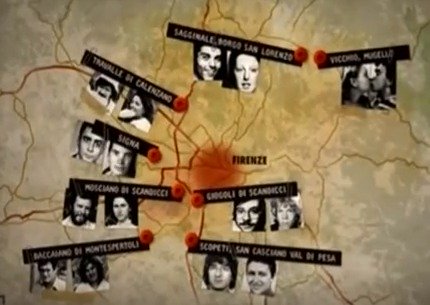

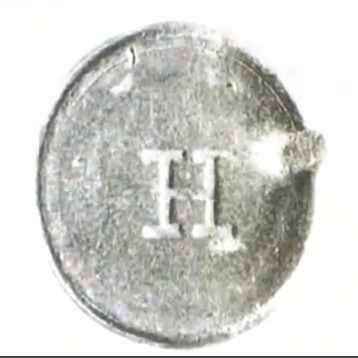






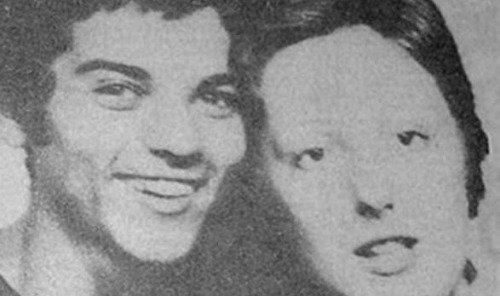


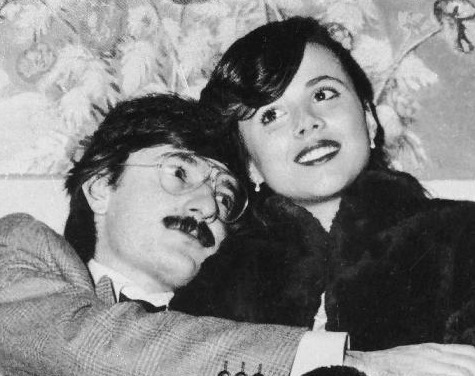




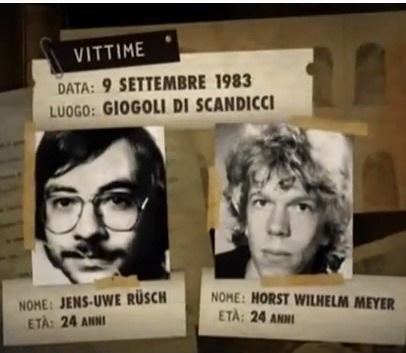




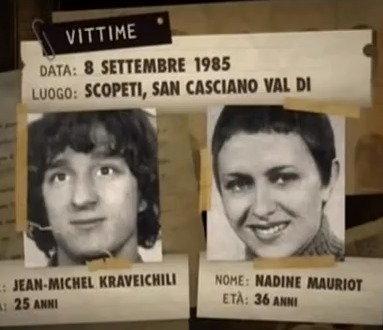
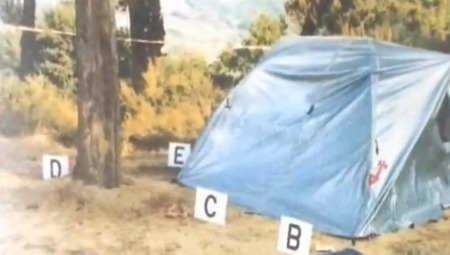











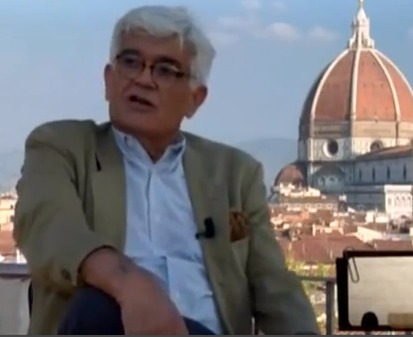




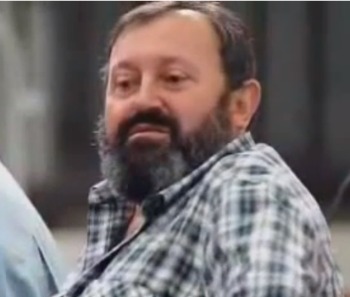


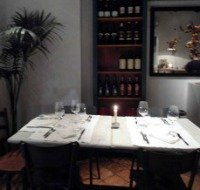



New! Comments
Have your say about what you just read! Leave me a comment in the box below.